- From Layton to Singh: The 20-year conflict behind the NDP’s deal with the Trudeau Liberals
- James Lorimer & Company Ltd. (2022)
“Justin Trudeau talks. Jagmeet Singh delivers.” So argued an NDP ad during the 2021 federal campaign.
A case could be made that the star of that election was the New Democrat leader. As Matt Fodor points out in his new book on the NDP’s two-decade struggle over its political identity, last year Singh polled at 46 per cent approval, while his party languished at 20 per cent. In terms of personal popularity, Singh also topped both Justin Trudeau at 37 per cent, and then former Conservative leader Erin O’Toole, at 28 per cent.
What has Singh done with such political capital? Strike bargains with Trudeau’s Liberals to keep them in power. Punching above their weight, Singh’s NDP pushed the Liberals to increase the Canada Emergency Response Benefit and Emergency Wage Subsidy during the COVID crisis.
Fodor, a political strategist and PhD candidate in political science at York University, reminds, however, that under the previous leaderships of Jack Layton and Tom Mulcair, there were big hopes the NDP would by now have had a turn running the show in Parliament.
This timely and incisive book leaves the reader with big questions about the future of Canada’s national politics on the progressive side:
Has Jagmeet Singh submerged the identity and principles of the NDP in this deal with the Liberals?
Will voters in the next election who are tired of the Trudeau Liberals embrace the NDP as an alternative progressive government?
Will grassroots NDP voters and workers, unhappy with the confidence and supply agreement, just stay home in the next election?
And in the long run, is it either merger with the Liberals or political oblivion?
While Fodor doesn’t go far to answer such questions, he provides an excellent roadmap to why they remain as unresolved as they are pressing for the NDP. He offers a close look at the internal power struggles and ideological clashes within the party, and the big personalities, that have led the NDP for the last 20 years towards the elusive goal of winning for the first time at the national level. He also examines the tensions as party members watched leaders make the quest for power a priority over the democratic socialist ideals of the base.
Essentially, this book tells the story of the most recent leaders of the NDP, their successes and their shortcomings, “The optimism of the Jack Layton era, the disappointment under Tom Mulcair, the excitement amidst diminishing expectations under Jagmeet Singh.” Fodor chronicles how the professionals at party headquarters consolidated their power and moved the NDP towards the centre in order to win elections. It is a tale about the conflict between the “orange liberals” in the party, and the convictions of the left-wing activists who joined the NDP because of its social-democratic ideals.
Layton’s breakthrough
In the November 2000 election the NDP received only 8.5 per cent of the popular vote and took just 13 seats, barely enough to retain official party status. Jack Layton took over leadership of the party in January 2003, winning on the first ballot. Under Layton, the federal NDP began to move to the political centre. It also professionalized its operation. Power shifted from local riding associations to Layton and his inner circle of advisors.
The party brass had come to the conclusion that in order to grow the party, they had to appeal to voters who did not traditionally vote NDP. Over four elections Layton would modernize the NDP and increase its seat count. His goal was to become the government, not just the conscience of the nation.
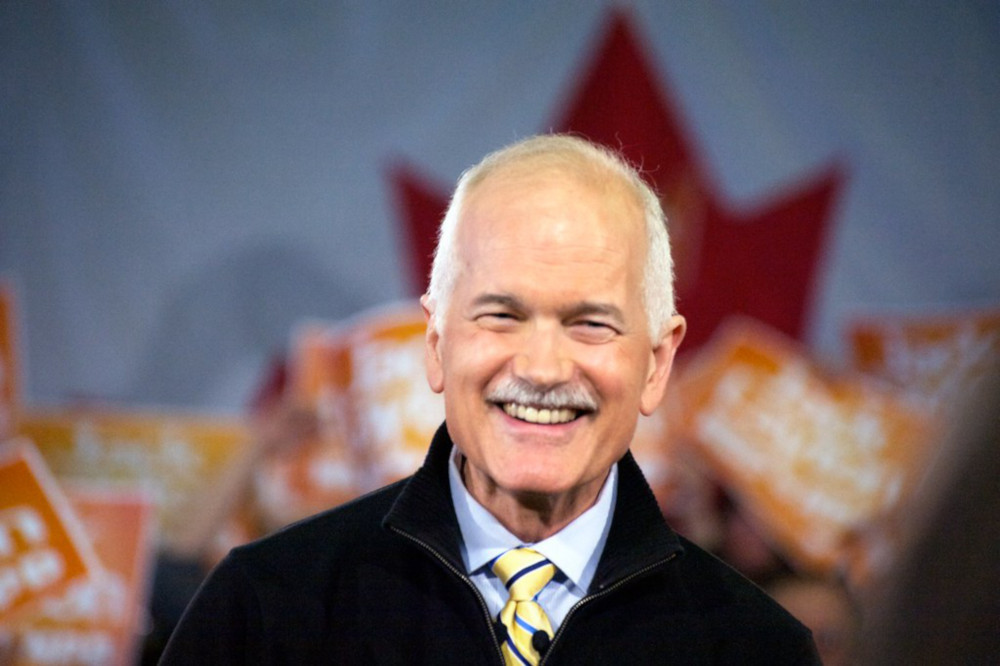
Facing a confidence vote in the spring of 2005, Paul Martin needed NDP support to survive. Despite an “NDP budget” in 2005, which included cancelling $4.5 billion in corporate tax cuts, the NDP joined with the Conservatives and the Bloc Québécois to defeat the Liberals and trigger an election. The NDP focused on attacking the Liberals for corruption. Only after the Conservatives took the lead in the polls did Layton begin to warn about the dangers of a Harper government. Many progressives within the party were upset that the NDP had forced an election over a budget that reflected their values, and worse, had done so by getting into bed with the Harper Conservatives.
In 2011 the Conservatives won a majority, but for the first time, seemingly justifying Layton’s pragmatism, the NDP became the official Opposition, winning an astonishing 103 seats. But Layton never did get to enjoy the fruits of his historic victory. While he did get to paint the master bedroom at Stornoway orange, he only spent one night in the official residence. Three months after becoming leader of the official Opposition in this breakthrough election, Layton tragically died of cancer.
The next NDP leader was Tom Mulcair, whose roots were in the Quebec Liberal Party. He won the leadership on the fourth ballot with 57 per cent of the vote. With no history on the left in social movements, he continued the party’s shift to the political centre and away from the NDP’s traditional roots. Winning seats was now the objective.
Mulcair’s first speech as leader was to the Economic Club of Canada in Toronto. He believed the party had to reach a wider public if they were going to defeat Stephen Harper. Mulcair ruled out personal tax increases even on the wealthy, just as there was a growing public awareness about the income gap between the top one per cent in the country and the rest of society. Alarmingly, the inequality was growing.
Mulcair outflanked
The 2015 election started as a three-way race. Tom Mulcair was leader of the official Opposition, which made the NDP the government-in-waiting if voters wanted to kick out the Conservatives. The NDP was leading in the polls, partly because of Mulcair’s superb performance in the House of Commons, where he took the government to task with razor sharp cross-examinations befitting his legal training.
In the second quarter of 2015, the party even managed to out-fundraise the Liberals, bringing in a record $4.5 million. As the official Opposition, they finally had the resources to do market research and polling that helped shape the party platform. It was a delicate balance between adhering to party principles, and reaching out to the broader electorate. In life as in politics, only the winner gets to smoke the real cigar.
The party membership was not broadly consulted when the NDP veered to the right in the 2015 election, with the surprising promise to bring in a balanced budget in the first year as government. The leader and his inner circle were firmly in charge, but at the same time losing their grip on a key party principle — social good before mere accounting.
The ever-vigilant Liberals sensed an opportunity with Mulcair’s bold change and seized it with alacrity. They ran to the left of the NDP, and the strategy paid dividends. Justin Trudeau won a majority, taking 184 seats and 40 per cent of the vote. The NDP lost more than half of its seats.
The party’s hopes of finally forming a government were dashed, and the consequences for Mulcair were swift. He faced a leadership review in Edmonton in April 2016 and the mood at the convention was sullen. Although the NDP retained 44 seats and received 19.7 per cent of the popular vote, the bottom line was depressing. Expecting to be government, they had returned to third-party status in the House of Commons.
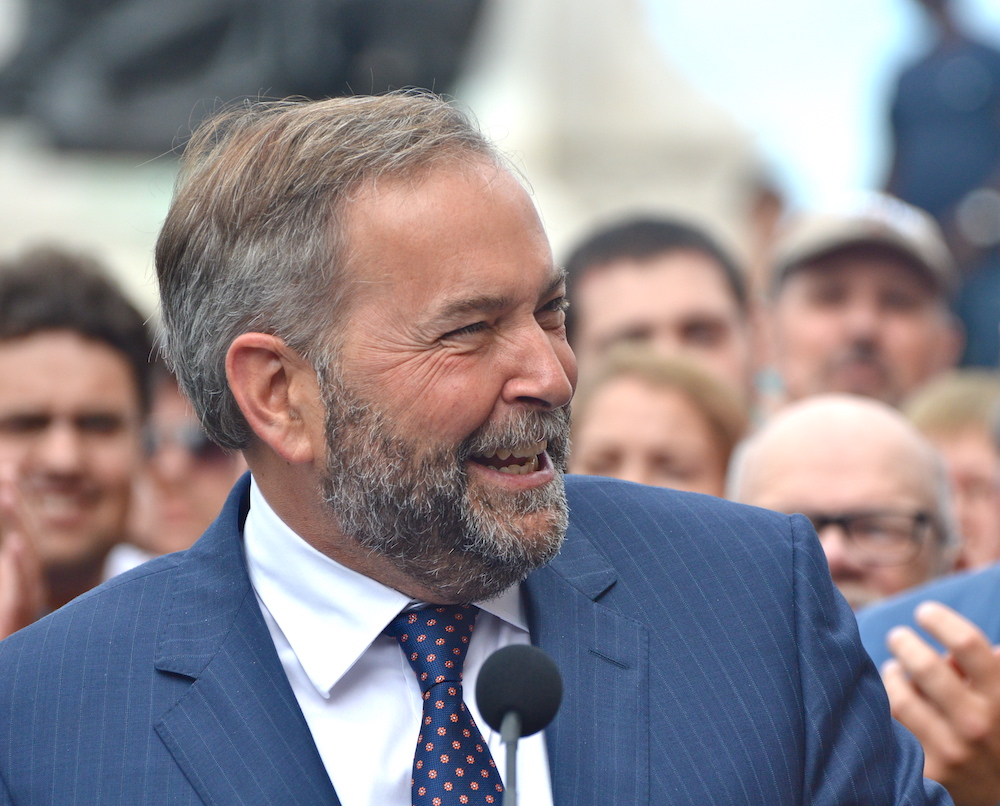
There was heavy criticism from NDP members for abandoning their traditional values in the pursuit of power. The NDP had a long tradition of putting principle before power. As outstanding as his public performances were in the House and in debates, Mulcair received just 48 per cent support in the leadership review. The writing was on the wall. He told delegates he would remain as leader until his successor was chosen.
Singh’s paperless deal
Another would-be NDP star was born as his talented predecessor’s star faded. The stylish and charming deputy-leader of the Ontario NDP became the next leader of the federal NDP. Jagmeet Singh’s campaign slogan was “Love and Courage,” a slogan that resonated with the base. Singh held out the promise of political success without compromising party principles. In provincial politics, he was the first NDP MPP elected in Peel Region, an important 905 seat in the coveted political turf area just west of Toronto.
Singh immediately created a buzz. He appeared in the men’s fashion magazine GQ, and used social media expertly. He also appealed to millennials and immigrant communities because of his remarkable story laid out in his memoir, Love and Courage. Singh was emotionally intelligent and adept at calmly handling criticism, even when it was racist. A video of Singh gently dealing with a heckler who accused him of being in bed with the Muslim Brotherhood went viral with 35 million views on social media. Singh, of course was not a Muslim.
According to Fodor, in both the 2019 and 2021 campaigns, the NDP constantly positioned itself slightly to the left of the Liberals, with a platform that appeared to be largely directed at the party’s base. It didn’t work. Despite spending twice as much as it had in the 2019 campaign, the NDP did not make a breakthrough in 2021: the party gained only one seat. Despite the party’s high hopes, support in the GTA and working-class communities did not materialize. The all-important local get-out-the-vote effort fizzled.
In the wake of the new political reality, Singh’s NDP took another major risk. In the fall of 2021, the news broke that the Liberals and the NDP were negotiating a deal that would keep the Trudeau minority government in power for up to three years. But it would not be a formal coalition that would see NDP representation in cabinet.
Negotiations for the deal were taking place as Ottawa was being occupied by the trucker convoy. Trudeau broke up the convoy by invoking the Emergencies Act on Feb. 14, a step that is now the subject of a federal inquiry. The law passed on Feb. 21. All 25 NDP MPs supported the Liberals, although Singh warned his party would withdraw its support if the emergency powers were misused. Still, there was concern in the party ranks about supporting controversial legislation that had such an impact on a touchstone of the NDP — civil liberties.
On March 21, 2022, details about the Liberal/NDP pact were made public. Unlike the 2008 document agreeing to work together, signed by Stéphane Dion, Jack Layton and Gilles Duceppe, there appeared to be no signed agreement between Trudeau and Singh. Nor was there a joint press conference. In fact, the leaders held separate news events. Singh stressed that NDP priorities were clear, and they would evaluate every budget and every decision. The leaders would meet once every quarter to discuss how the arrangement was working. The deal included the inclusion of dental care for low-income Canadians, which was in the NDP election platform in 2021.
Fodor writes that “Orange Liberals” have gradually consolidated power within the NDP. It remains to be seen what party members, and ultimately voters, will make of Jagmeet Singh’s “supply and confidence” deal with the Trudeau Liberals. Some NDP members are unhappy because they fear that the Liberals will wind up getting credit for NDP proposals.
In the last seven federal elections in Canada, five have produced minority governments, perhaps the new political reality. According to Tom Mulcair, who led the NDP from 2012 to 2017, Singh’s deal in effect gives the Liberals the mandate to govern until June 2025 as if they had a majority. The Liberals won the last election with just 32.6 per cent of the popular vote.
In October 2022, Labour Minister Seamus O’Regan stood with his NDP critic Alexandre Boulerice to announce promised legislation to boost unions by banning replacement of federally regulated workers during strikes. A 10-day paid sick leave would start immediately. It was an important measure. Blue collar working people had contributed to Premier Doug Ford’s landslide victory in Ontario last June. Given that Ford has tried to use the notwithstanding clause to break the CUPE strike in Ontario, it is an open question if blue collar workers will stick with the Conservatives.
What shade of orange?
In recent weeks Jagmeet Singh has flickered in and out of national headlines. He courted controversy by sending a letter to Trudeau slamming the Bank of Canada’s interest rate hikes. Critics questioned whether he understood the need for the central bank to remain independent of political interference.
And Singh’s own party’s internal review found fault with his messaging during the last campaign, suggesting he needs to give voters on the left more concrete reasons to vote NDP. In other words: more orange, less red.
“It’s like someone is drowning: Jagmeet is very caring and genuinely understands what the person is going through. He then tells them other leaders cannot help,” the report quotes an unidentified campaign insider.
“But then he didn’t throw a buoy, a rope that gives hope of getting out of there, something concrete to hold on to, something clear and real that will change things in Canadians’ day-to-day life, something to make the situation different, and better.”
Singh can be fierce in his criticism of Trudeau. Just after the election he claimed the NDP did the heavy lifting on selling left-wing policies that saved Trudeau’s bacon. “There are a lot of things that we campaigned on that, initially, the Liberals were opposed to — but then came around and supported the campaign.” And Singh has slammed the Liberal climate record as “abysmal.”
But for now the fates of Singh and Trudeau seem inextricably tied together.
Which means the NDP remains in front of the Gordian Knot that faced all three leaders Fodor has written about. How does any NDP leader stick with party principles and keep faith with the base, and at the same time attract the kind of broader support that will be needed to actually win an election? ![]()
Read more: Federal Politics


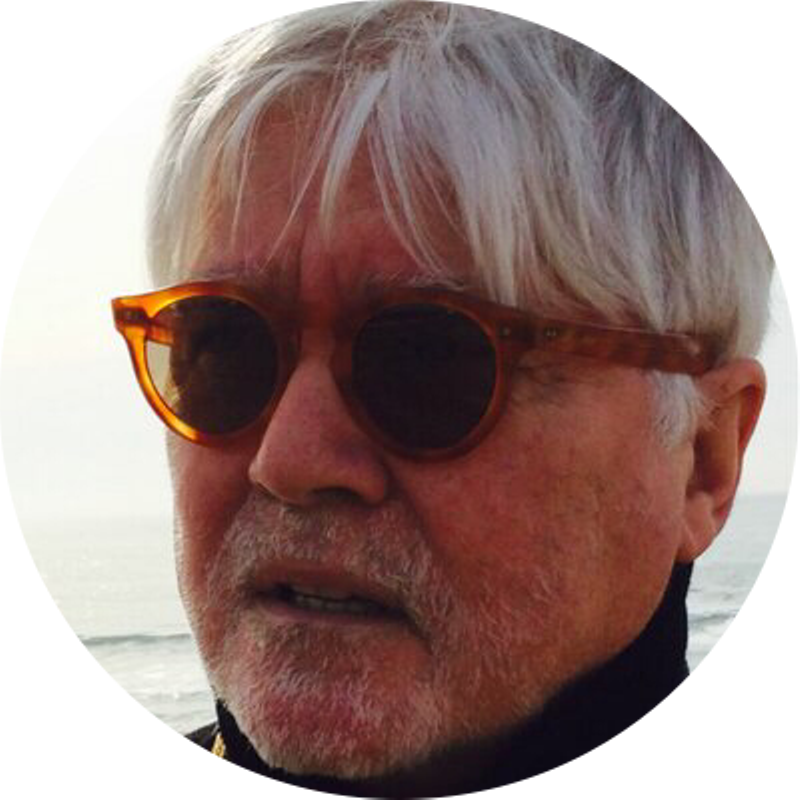

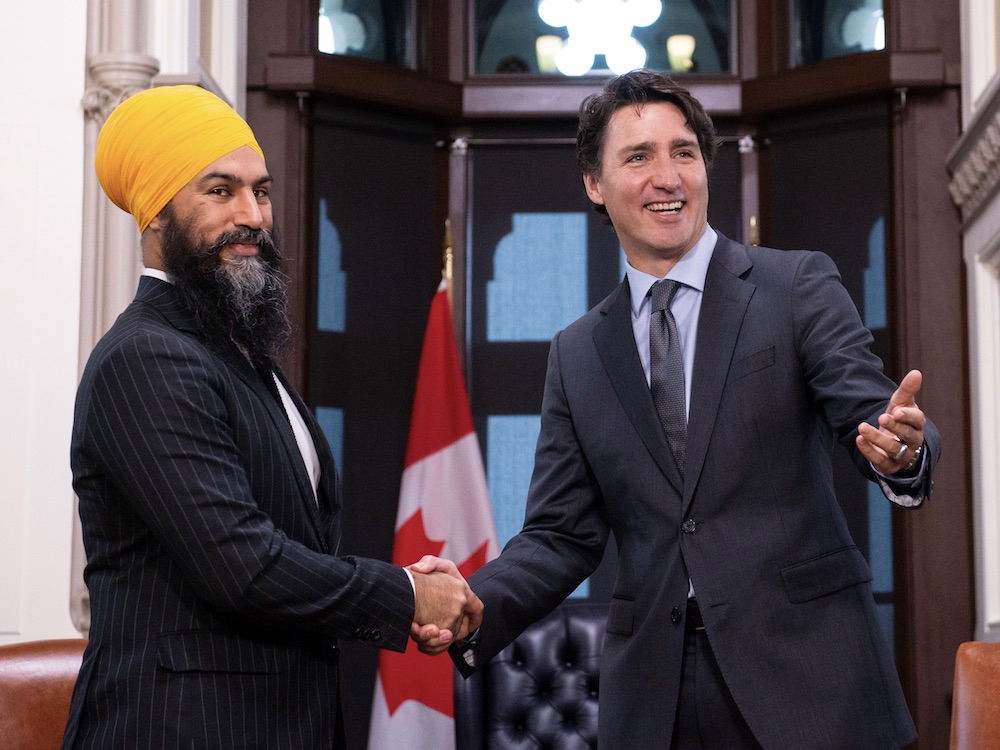






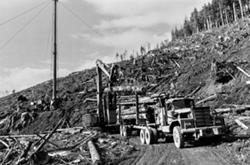


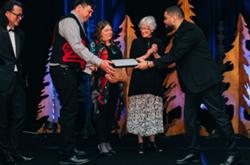

Tyee Commenting Guidelines
Comments that violate guidelines risk being deleted, and violations may result in a temporary or permanent user ban. Maintain the spirit of good conversation to stay in the discussion.
*Please note The Tyee is not a forum for spreading misinformation about COVID-19, denying its existence or minimizing its risk to public health.
Do:
Do not: